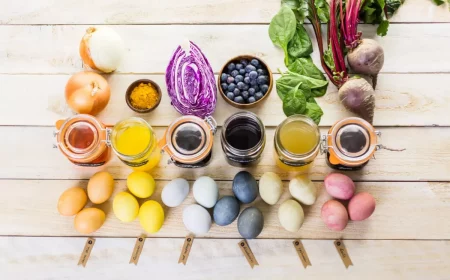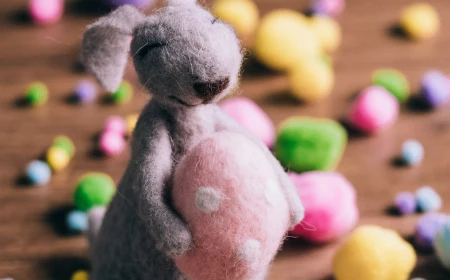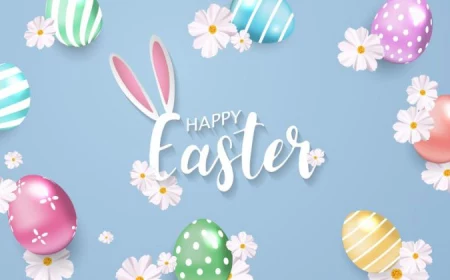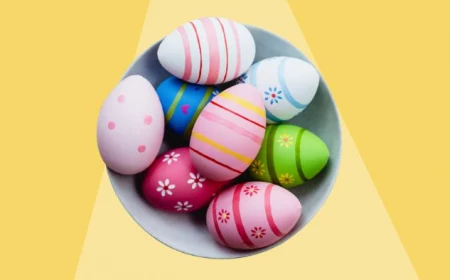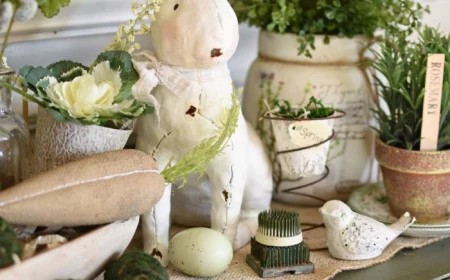The Art of Connection: How a Box of Crayons Can Make Your Easter Unforgettable
I’ve spent a long, long time in the world of kids and art. First as an early childhood teacher, and later helping schools build out their creative programs. In all those years, I’ve seen thousands of little hands grab a fresh sheet of paper and a box of crayons. To many parents, it’s a lifesaver—a solid twenty minutes of quiet time while dinner is on the stove. But I see so much more going on.
In this article
I see tiny fingers building the strength they’ll one day need to write their own name. I see a young mind wrestling with big problems, like which color a bunny’s ears really should be. And honestly, the most important thing I see is a golden opportunity for connection.
Easter is the perfect backdrop for this. It’s full of fun symbols and stories that can turn a simple coloring session into something really meaningful. This isn’t about those Pinterest-perfect crafts that take three hours and a hot glue gun. Nope. This is about taking a classic, simple activity and unlocking its full potential. Let’s talk about what’s really happening when your kid starts to color.
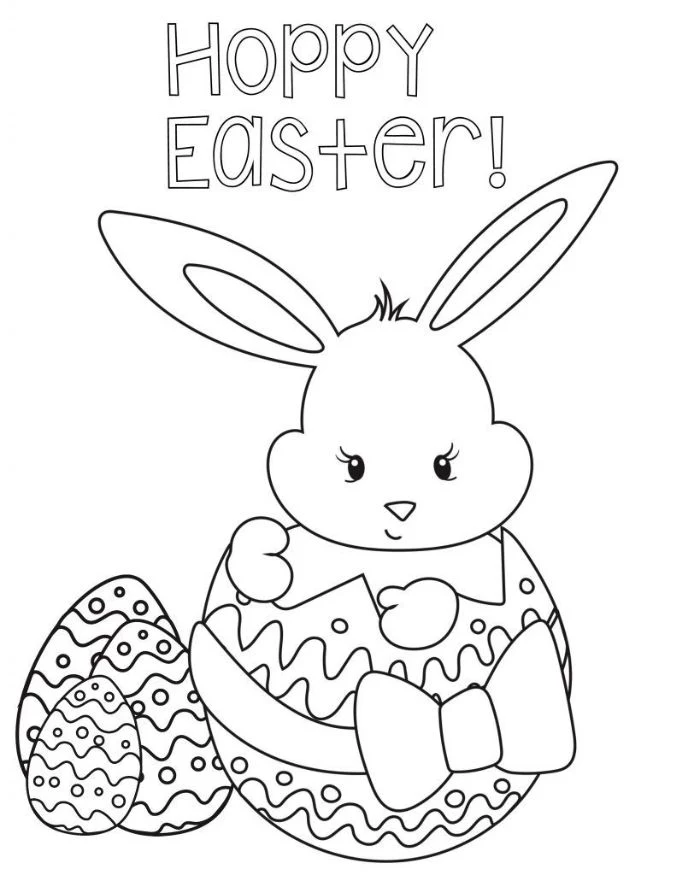
The Brain-Building Magic of Coloring
When a child is focused on a coloring page, their brain and body are firing on all cylinders. Once you see what’s going on behind the scenes, you start to appreciate the scribbly process way more than the finished product. We aren’t just making pretty pictures here; we’re building a brain.
The Gym for Little Fingers
Let’s get specific about fine motor skills. To hold a crayon, a child has to use a pincer grasp—pinching it between their thumb and forefinger. Sound familiar? It’s the exact same grip they’ll need for holding a pencil later on. I’ve seen so many kids in the classroom struggle with writing, and it often comes back to a lack of hand strength. Coloring is the workout.
Pushing the crayon, changing the pressure for lighter or darker shades, and trying to stay in those tricky little corners… that all builds up the dozens of tiny muscles in their hands and wrists. For a three-year-old, just making big, bold strokes is a huge win. By five or six, they can start navigating the details. That progress isn’t an accident; it’s practice.
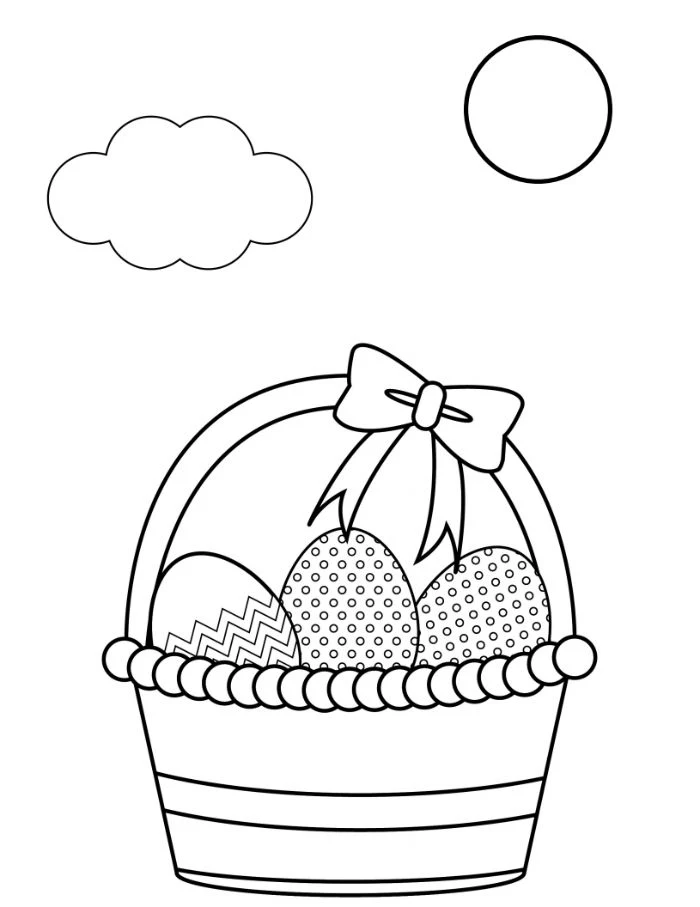
Training the Brain to Focus
Coloring is also an amazing workout for a child’s brain. It takes real concentration to pick a color, decide where it goes, and try to stay inside the lines. In my teaching days, I could always spot the kids who had regular time for this kind of focused play. They were the ones who could tackle a multi-step task without needing constant redirection.
And there’s a spatial reasoning piece, too! They have to figure out the relationship between the chick and the egg it’s popping out of. They learn to see the page not just as a flat surface, but as a little world with things in front and things in back. This visual skill is a massive help for things like math and reading comprehension down the road.
A Secret Tool for Calm
Ever notice how a kid can get totally lost in their coloring? That rhythmic, repetitive motion is incredibly calming for the nervous system. It’s a fantastic way for a child to process their day or work through big feelings like frustration or overstimulation. It gives their busy mind one simple, pleasant thing to focus on.
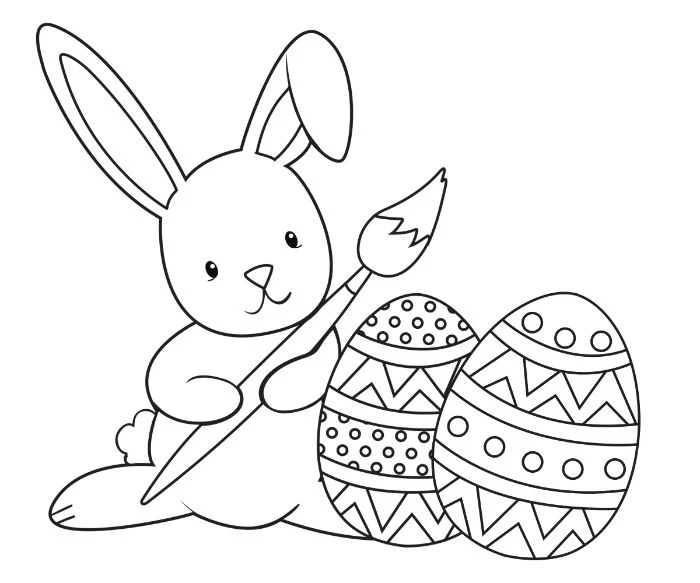
Quick tip: I used to use coloring as a “cool-down” activity after a wild recess. Within minutes, the vibe in the room would shift from pure chaos to calm, focused energy. It’s a super reliable tool for helping kids self-regulate—a skill that’s worth way more than a perfectly colored egg.
Setting Up an Awesome Art Station at Home
You definitely don’t need a fancy studio. But a little bit of thought into your tools and space can make a world of difference. When you set up a proper station, you’re not just encouraging better work; you’re showing that you value their creativity.
Let’s Talk Tools: A Parent’s Guide
Not all art supplies are created equal, and your choice can totally change the experience. Here’s my breakdown from years of trial and error (and cleaning up messes).
- Crayons: The undefeated classic, especially for the little ones (ages 2-5). My advice? Spend the extra dollar on a quality brand like Crayola. They’re usually just $2-$4 a box and have rich, vibrant pigments, so your child doesn’t have to press down hard and get frustrated. Cheaper, off-brand crayons can be waxy and faint.
- Colored Pencils: These are better for older kids, maybe ages 6 and up, who have better hand control. They’re fantastic for fine details, blending, and shading. A small set of 12 good-quality pencils (around $8-$15) is way better than a giant set of 100 bad ones. Look for pencils with a soft core for smoother color.
- Markers: Kids adore the bold, instant color. The mess factor is higher, though! Heads up: markers will bleed through normal printer paper every single time. Use a thicker paper like cardstock, or just slide a piece of scrap paper underneath. And I cannot stress this enough: buy WASHABLE markers. Trust me. The peace of mind is worth the $5-$7 price tag.
- Watercolors: For a completely different and wonderful sensory experience, try a simple watercolor set. They’re great for kids ages 4 and up (with supervision). You don’t need fancy tubes; a basic pan set from a brand like Prang is perfect for beginners and usually costs less than $10. It’s obviously messier, so an old t-shirt and a plastic tablecloth are your best friends here.
By the way, the paper you use really matters. Thin copy paper is fine for scribbling, but for a piece you might want to display on the fridge, grab a pack of white cardstock. You can find a pack of 50 sheets for about $8-$12 at any craft store or even Target. It feels more official and holds up to enthusiastic coloring without tearing or bleeding.
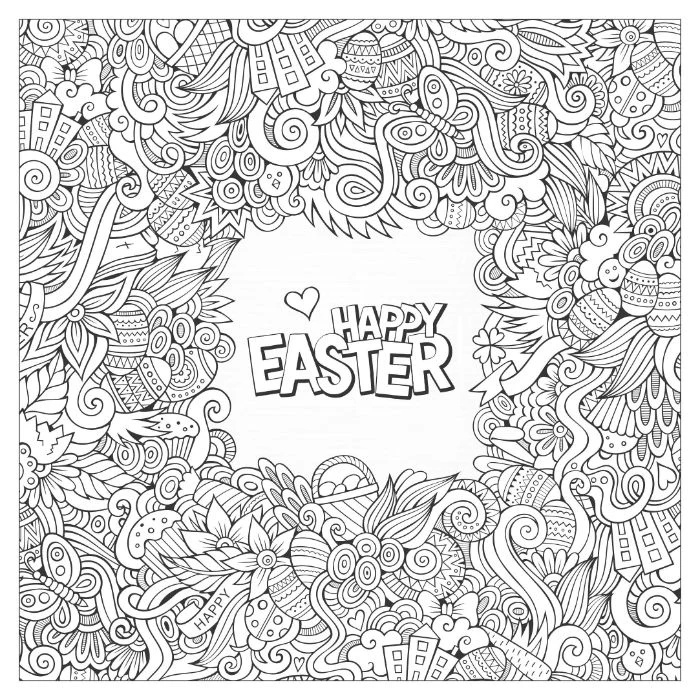
Creating the Space
Find a designated spot for art, even if it’s just a small table in a corner. Keep the supplies in a caddy or a few mason jars so they’re easy to see and grab. This also teaches kids to be responsible for their tools. Make sure the spot has good lighting! A simple plastic tablecloth or a flattened cardboard box makes cleanup a breeze and takes away the fear of making a mess. When a kid isn’t stressed about a stray mark, they’re free to create.
Going Beyond Bunnies and Chicks
A coloring page can be a fantastic springboard for conversations about family, stories, and traditions. The symbols around this time of year are richer than you might think.
For example, the egg is an ancient symbol of new life and rebirth. While we often just dye them in a cup, some cultures created a stunning art form around them. They would draw intricate patterns on the egg with melted beeswax, then dip the egg in dye. The wax would protect the covered area, and the process would be repeated to create layered, meaningful designs.
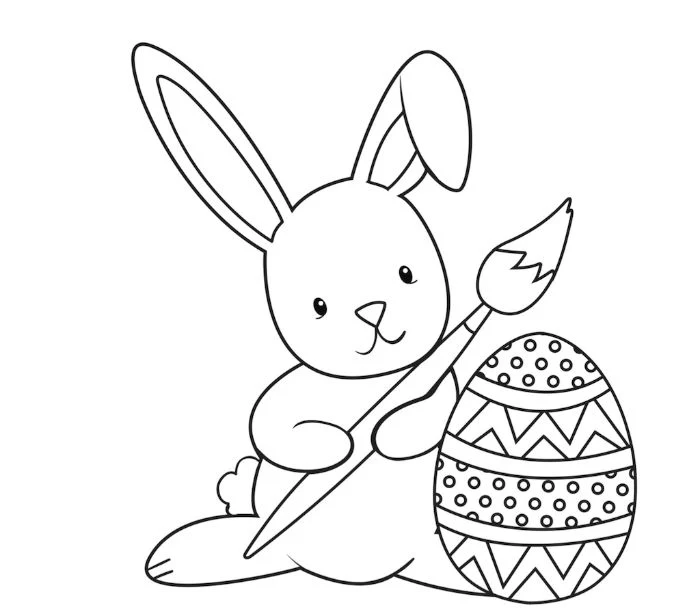
You can try a super simple version of this at home!
Easy Crayon-Resist Eggs: A Step-by-Step Guide
- Make sure your hard-boiled eggs are completely cool and dry. This is key!
- Using a white crayon (or any light-colored one), press down hard and draw secret messages or patterns all over the egg.
- Mix your egg dye according to the package directions and dip your patterned egg in.
- When you pull it out, the dye will have colored the egg but “resisted” the waxy crayon markings, revealing your cool design! It feels like magic.
And did you know the Easter Bunny was originally a hare? The tradition comes from old German folklore. The story goes that a special hare would decide if children were behaving and deliver colored eggs to the good ones. It’s a fun little story to share while you’re coloring!
Turning Doodles into Real Dialogue
The best part of all this is the chance to connect. But sometimes it’s hard to know what to say. Don’t worry, you don’t need to be a child psychologist. Just be curious.
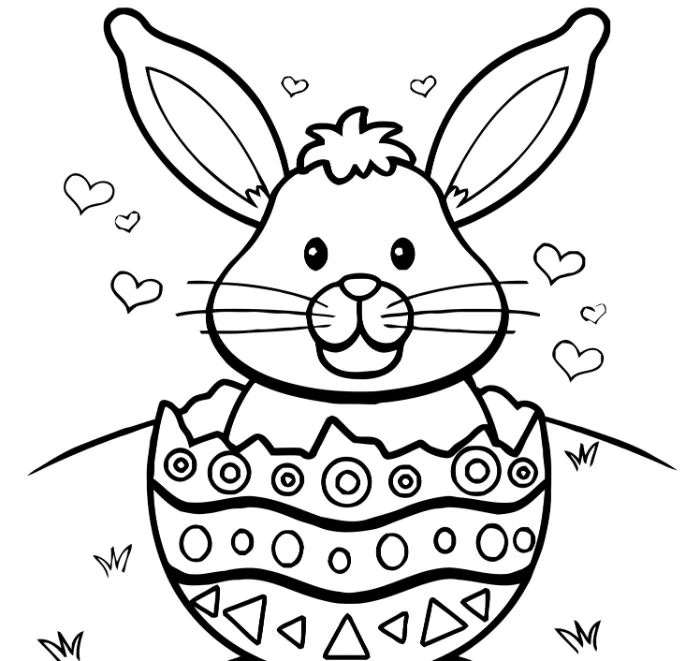
Here are a few conversation starters to try during your next art session:
- “Oh, that’s interesting! Why did you choose blue for the bunny’s ears?”
- “Tell me the story of what’s happening in this picture.”
- “What do you think this little chick is feeling right now?”
- “If you could jump into this picture, what would you do first?”
Quick Wins and Common Problems
Let’s be real, art time isn’t always smooth sailing. Here are a couple of my favorite tricks.
The Meltdown Over a Mistake: When your child gets upset about coloring outside the lines, reframe it. Say something like, “Oops! It looks like that blade of grass is so excited it’s growing right off the page!” This turns a perceived failure into a fun part of the story.
The 2-Minute Magic Trick: Need a quick, surefire win? Take a piece of white paper and write a secret message or draw a simple picture with a white crayon. Hand the “blank” paper to your kid and have them paint over it with watercolors. Their gasp when the message appears is priceless.
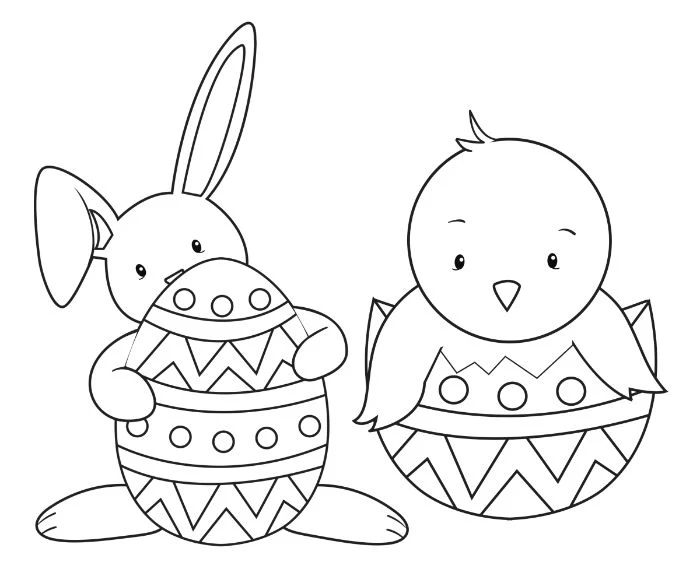
Time for a New Tradition?
So, next time you pull out the art supplies, remember that you’re doing more than just filling time. You’re building a brain, calming a soul, and opening a door for conversation. It’s not about making a masterpiece for the wall. It’s about the messy, colorful, wonderful process of making a memory together.
Inspirational Gallery
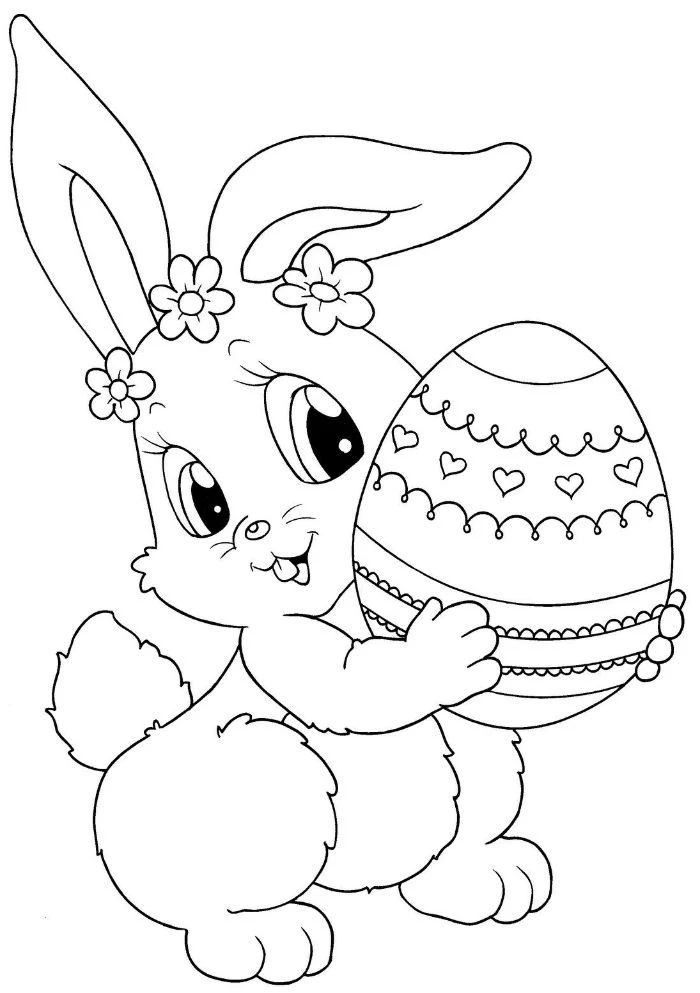
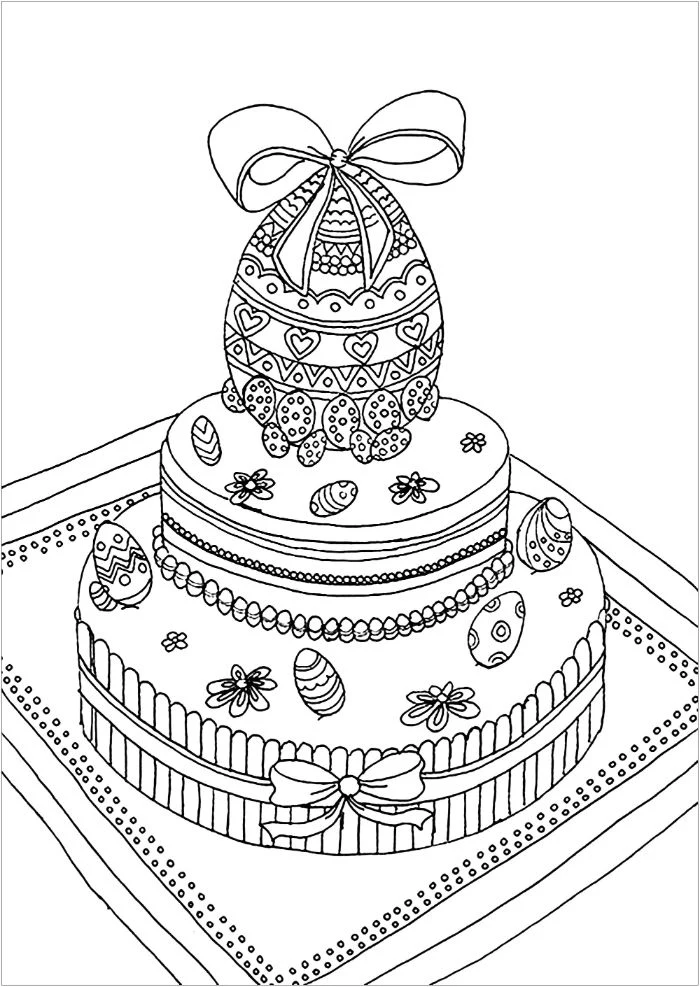
Go beyond the standard box. While the classic Crayola crayons are iconic, exploring different types can reignite interest. Try Crayola Twistables, which never need sharpening and are less prone to breaking. For a touch of magic, metallic or glitter crayons can make those Easter egg designs truly sparkle and feel extra special.
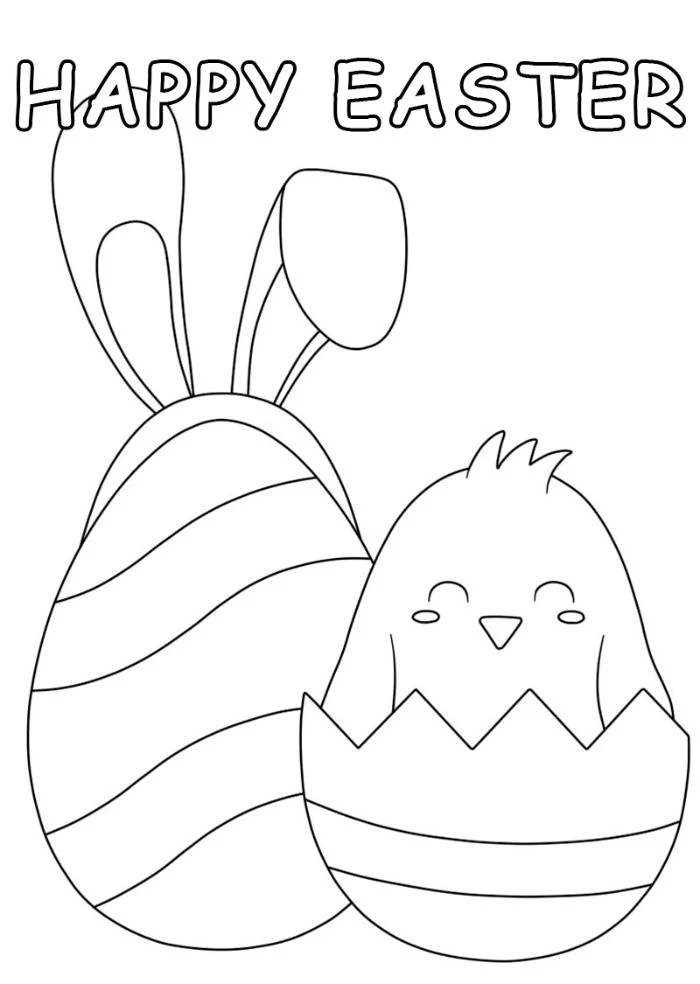
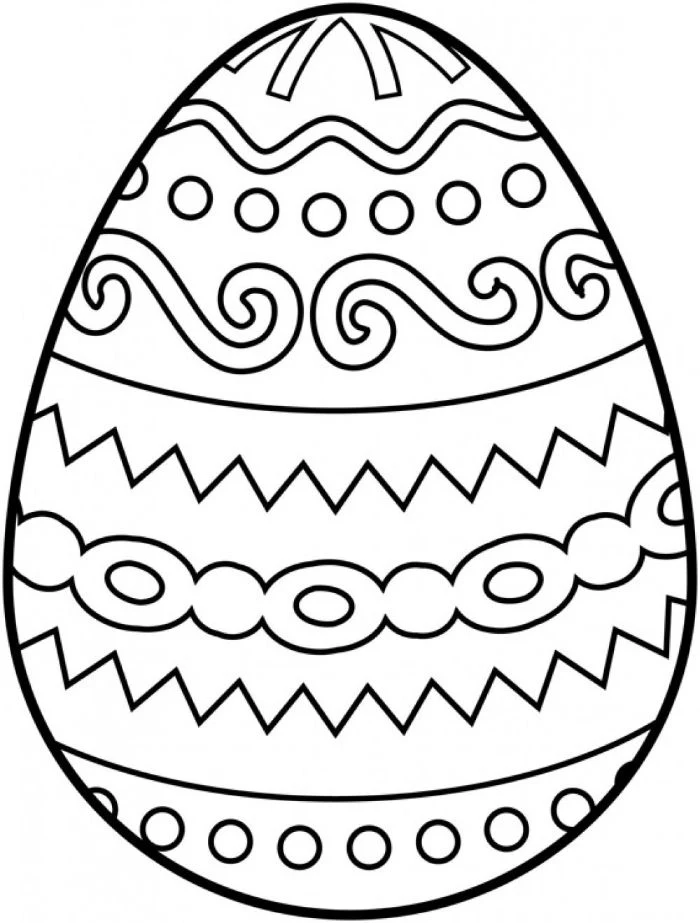
- Boosts hand-eye coordination.
- Encourages storytelling and narrative sequencing.
- Provides a shared, screen-free focus for connection.
The secret? Co-coloring. Instead of just observing, grab a coloring sheet for yourself. Working side-by-side invites conversation and makes the activity a shared journey, not a task for your child to complete.

More than 90% of children under the age of 12 use crayons, making it one of the most universal childhood experiences.
This shared familiarity is what makes it such a powerful tool for connection. When you sit down to color, you’re tapping into a memory from your own childhood, creating a bridge between your experience and theirs. It’s a simple, unspoken way of saying,
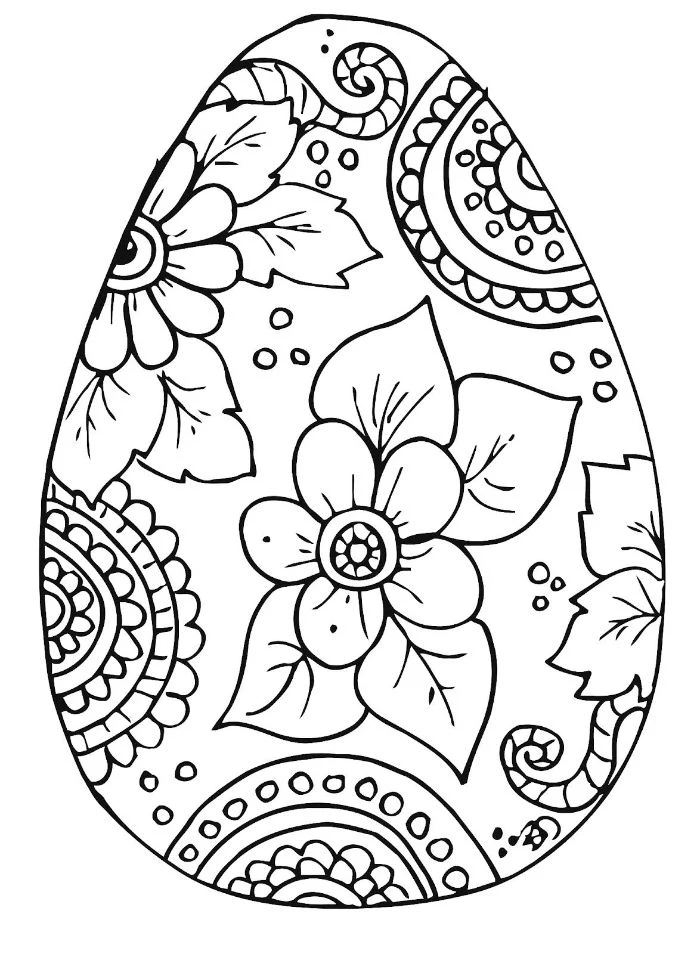
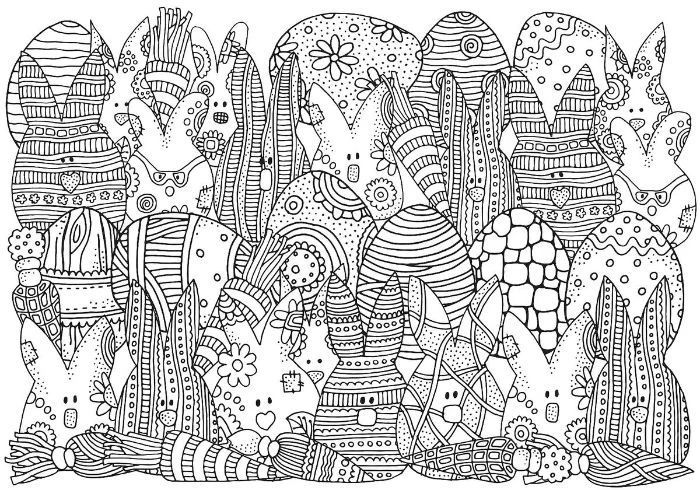
What if my child only wants to use one color?
Embrace the monochrome phase! A child exploring a single color is often learning about intensity and pressure—how to make a line faint, bold, or textured. Instead of pushing for a rainbow, ask about their choice.
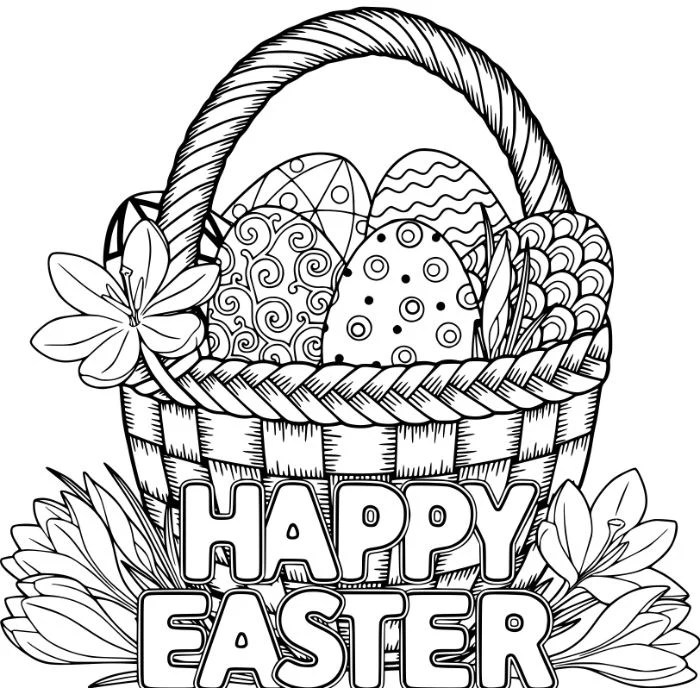
Classic Wax Crayons: Perfect for bold strokes and learning to apply pressure. They are the go-to for developing the pincer grasp.
Oil Pastels: A richer, smoother alternative. They blend beautifully, allowing kids to mix colors directly on the page for a painterly effect. A great next step for a child who loves vibrant results.
For Easter themes, wax crayons are great for detailed patterns, while pastels are wonderful for soft, fluffy bunnies and blended sunset backgrounds.
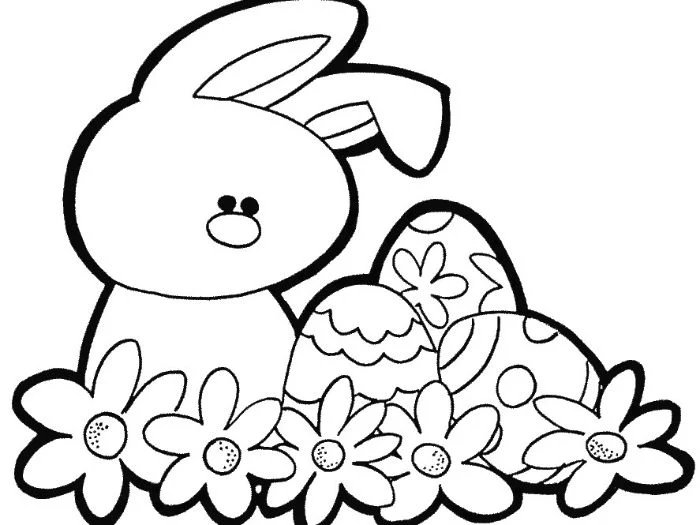
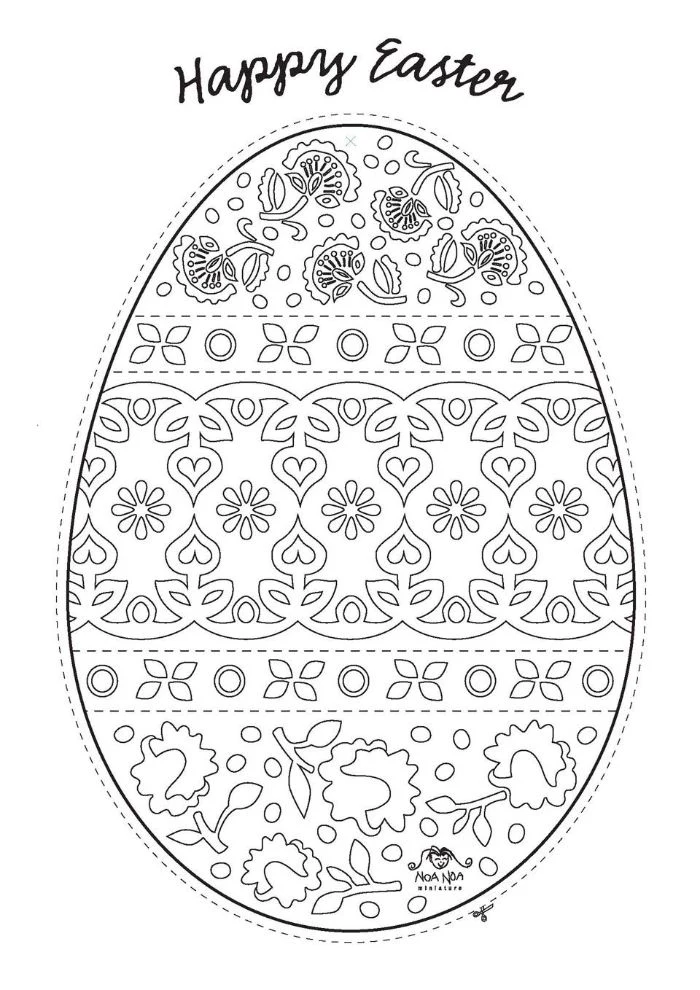
A common pitfall: Over-correcting their work. When a child draws a purple sky or a green bunny, our instinct can be to gently steer them toward
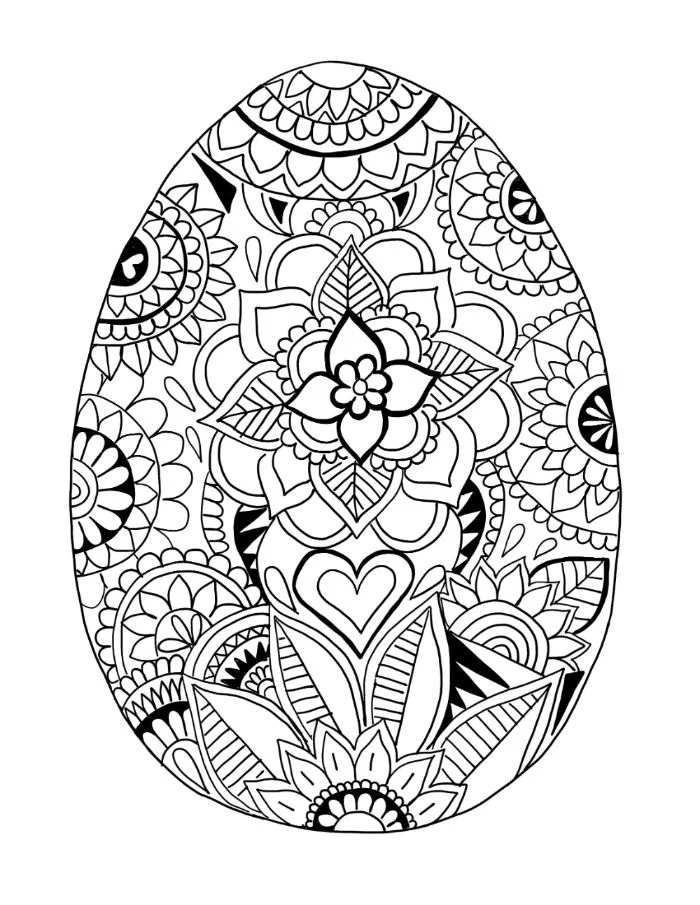
Don’t be limited by printer paper. A change in texture can transform the experience. Try coloring on:
- Cardboard: Cut from an old shipping box, it provides a rugged surface.
- Paper Plates: The circular shape is perfect for creating intricate Easter egg designs or a bunny’s face.
- Brown Paper Bags: A fantastic, large-scale canvas for a collaborative family mural.
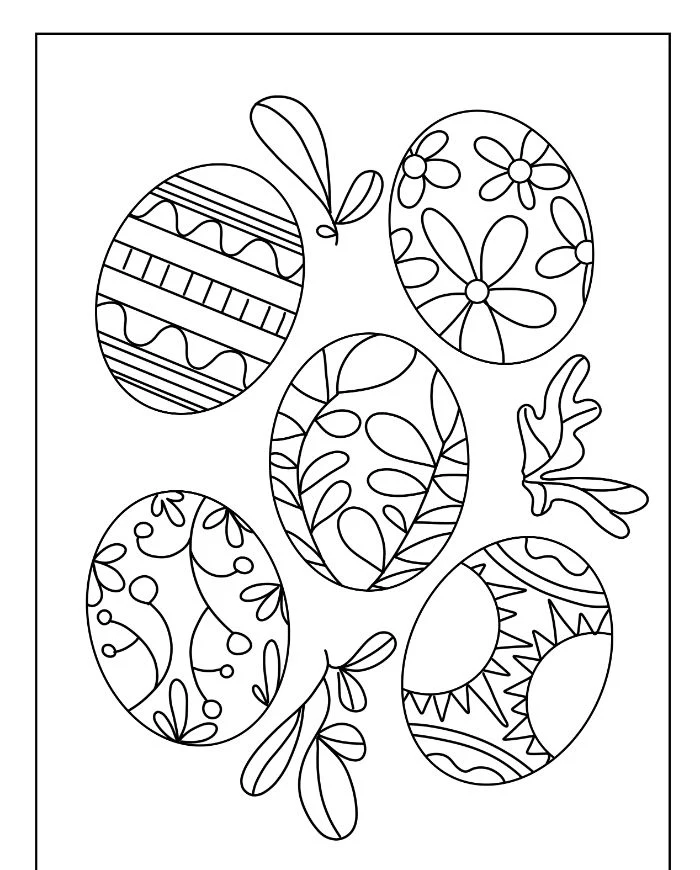
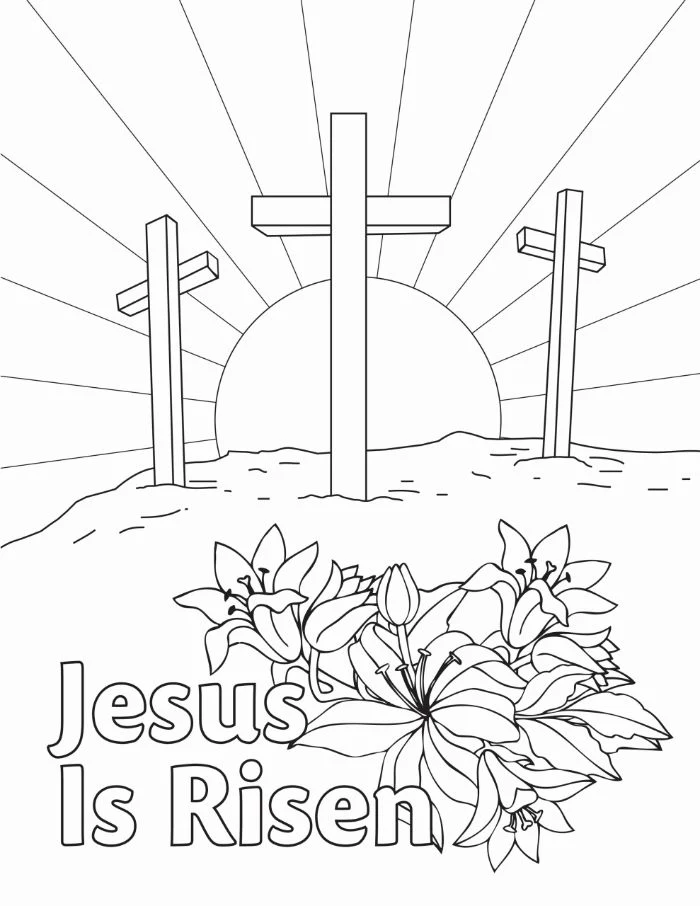
Introduce the idea of color temperature. Gather all the warm colors (reds, oranges, yellows) and talk about how they feel like sunshine or a cozy hug. Then gather the cool colors (blues, greens, purples) and talk about how they feel like the quiet evening or a shady spot in the garden. This is a simple, sensory introduction to the basics of color theory.
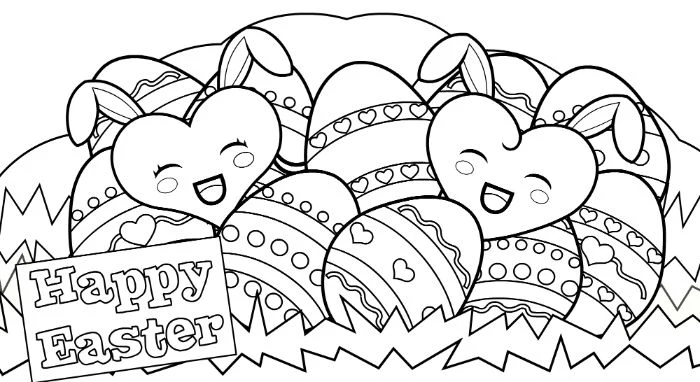
How can I get my older child (7+) interested?
Challenge them with a creative prompt that goes beyond simple coloring. Ask them to design the ‘Ultimate Easter Egg’ with patterns that represent their favorite things: video game characters, book themes, or sports logos. You can also introduce them to watercolor crayons, like those from Faber-Castell, which add a ‘wow’ factor when water is brushed over their drawing.
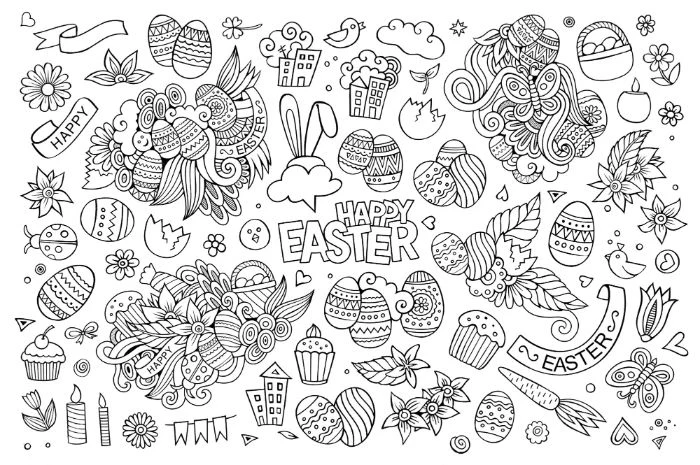
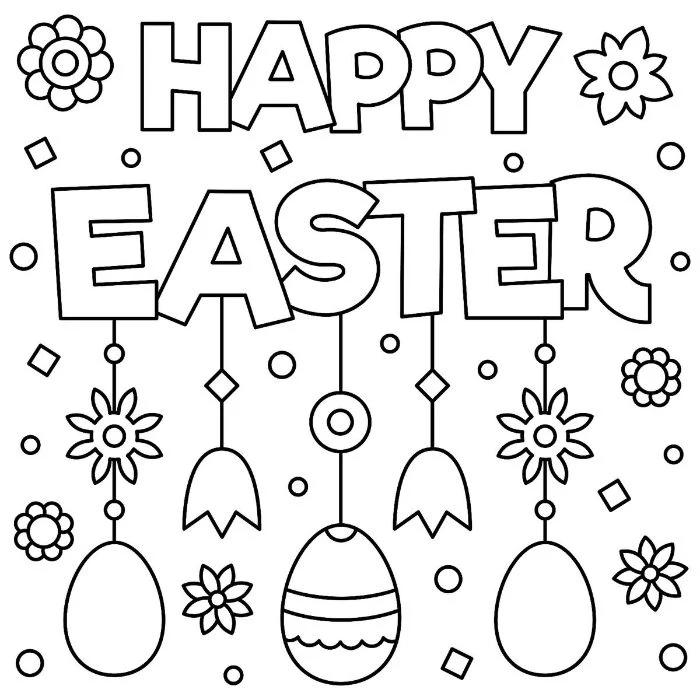
Turn broken crayon pieces into a new creative tool. Peel off the paper, place the bits into a silicone mold (Easter shapes are perfect for this!), and bake in the oven at 200°F (95°C) for 15-20 minutes until melted. Once cooled, you’ll have new, multi-colored crayon pucks that are fun to hold and create unique strokes.
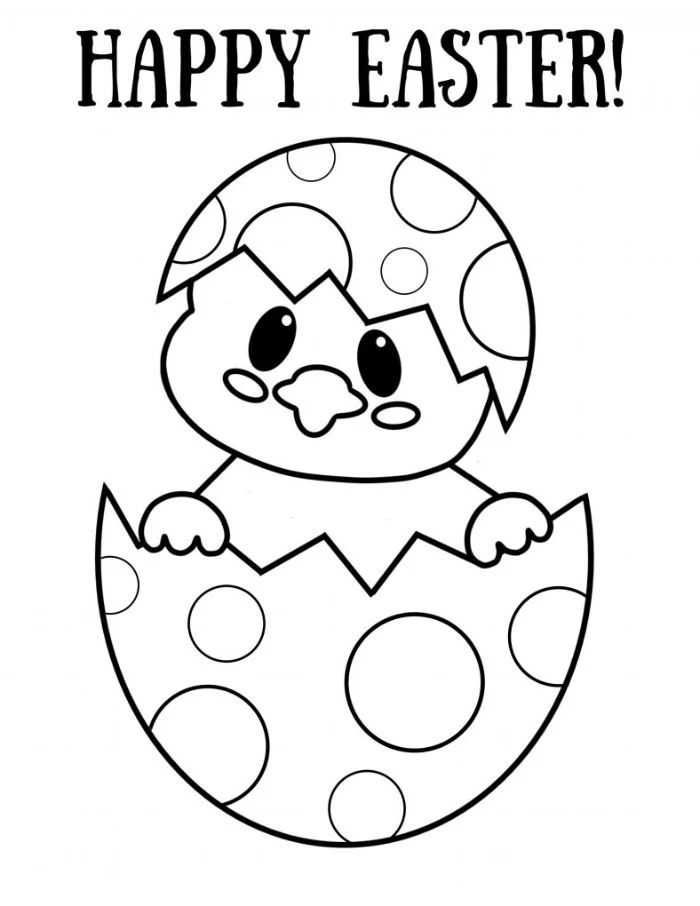
Traditional Coloring Pages: Excellent for fine motor control and following patterns.
DIY Story Scenes: Draw a simple landscape (a hill and a sun) and ask your child to add the Easter story. Where is the bunny hiding the eggs? Who is coming to find them?
The first builds skill, the second builds narrative imagination. Both are valuable.
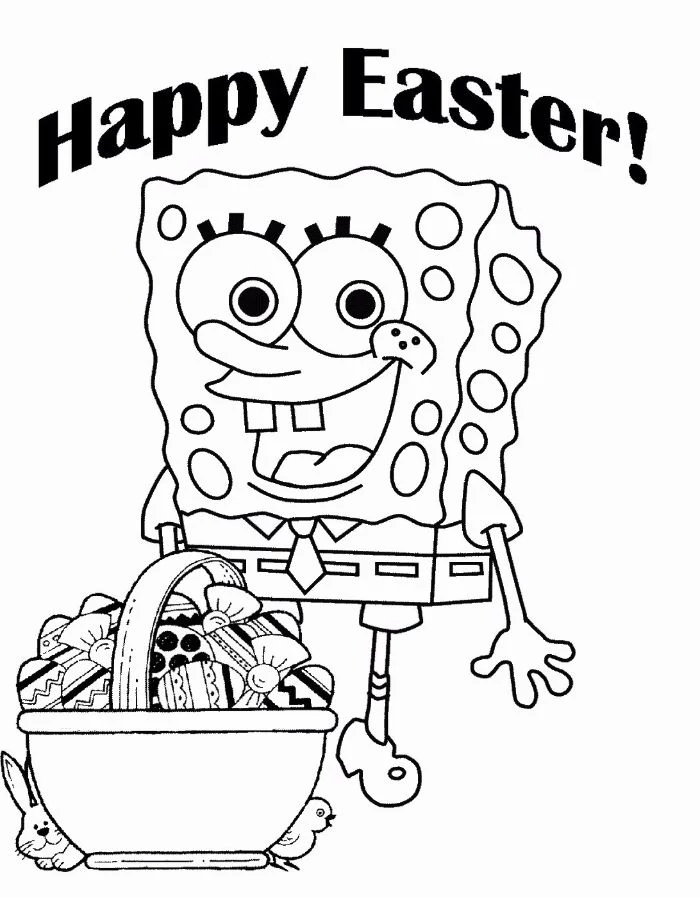
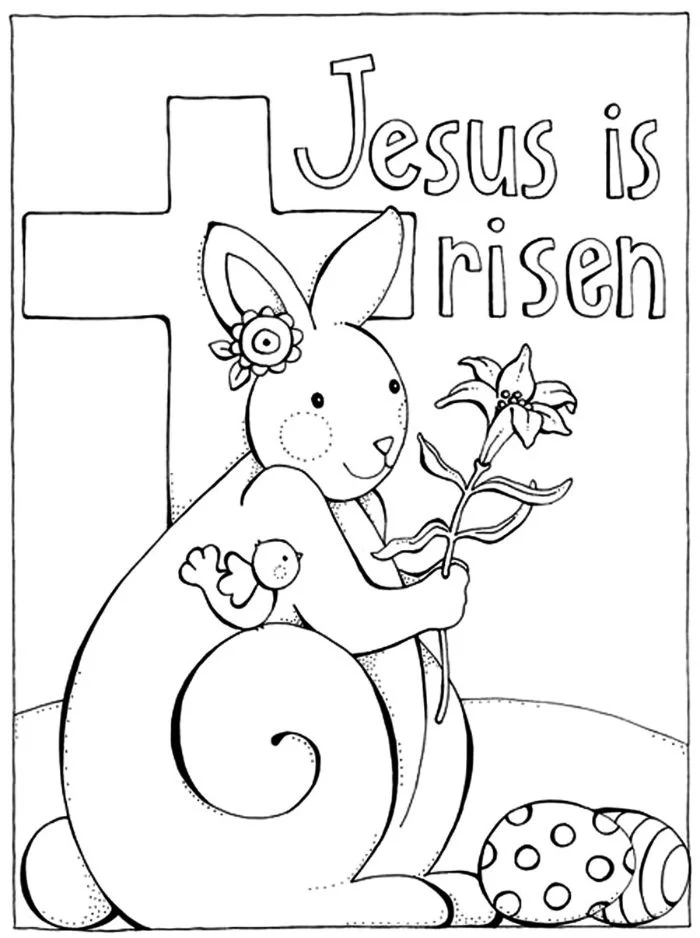
- A beautiful handmade gift tag for Easter baskets.
- Custom wrapping paper for a small present for grandparents.
- A colorful, laminated placemat for Easter brunch.
The secret? Celebrating the finished product. While the process is key, honoring the artwork by giving it a purpose shows your child that their creative efforts are valued and seen.
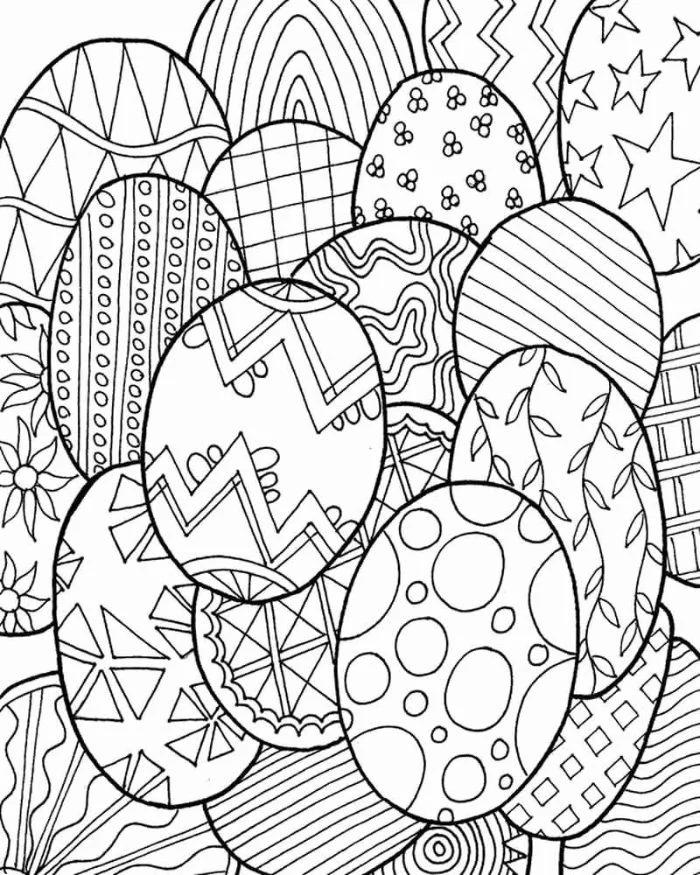
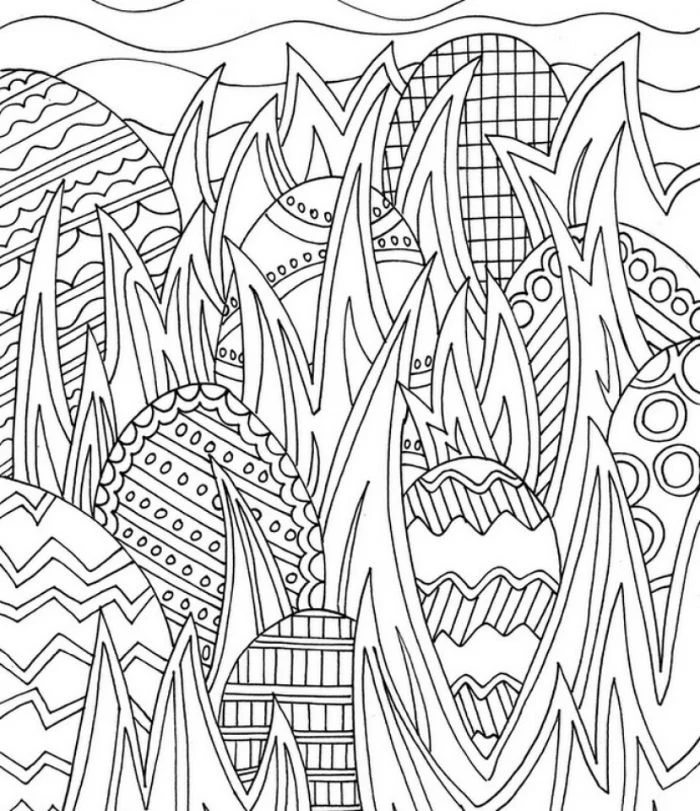
Look to the intricate beauty of Ukrainian Pysanky for inspiration. These famous Easter eggs are decorated using a wax-resist method. You can mimic this with a white or light-colored crayon. Have your child draw patterns on an egg coloring page, then paint over it with watercolor paints. The wax will resist the paint, revealing their magical design.

According to a study from Johns Hopkins University, engaging in creative arts can reduce stress and anxiety by lowering cortisol levels.
This benefit isn’t just for kids. When you color alongside your child, you’re both engaging in a meditative activity that calms the nervous system. It’s a shared moment of mindfulness, making the connection even deeper.
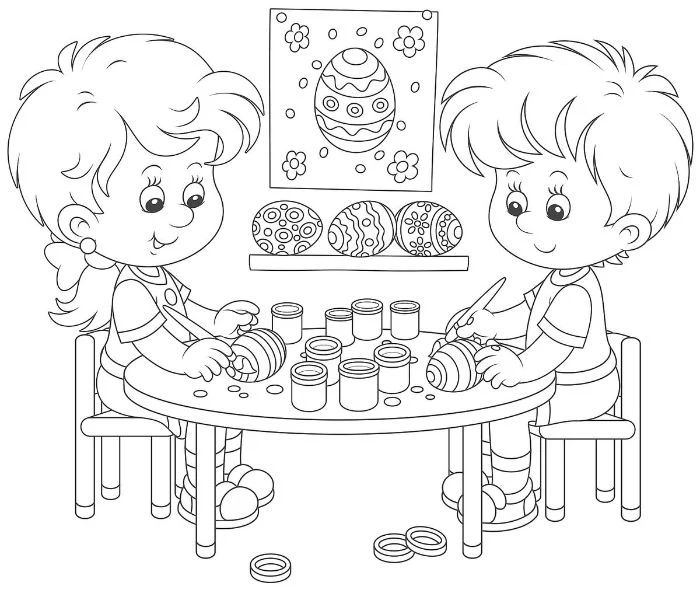
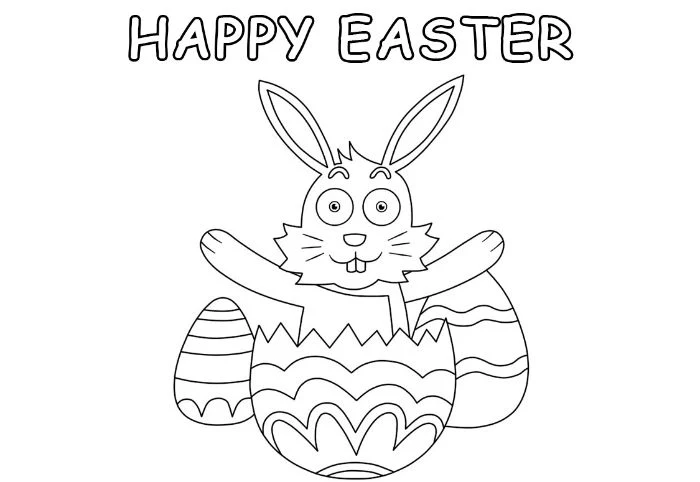
A key detail: holding the paper. Encourage your child to use their non-dominant hand to steady the paper while they color. This simple act engages both sides of the brain and develops bilateral coordination—a foundational skill for tasks like tying shoes, using scissors, and playing sports.
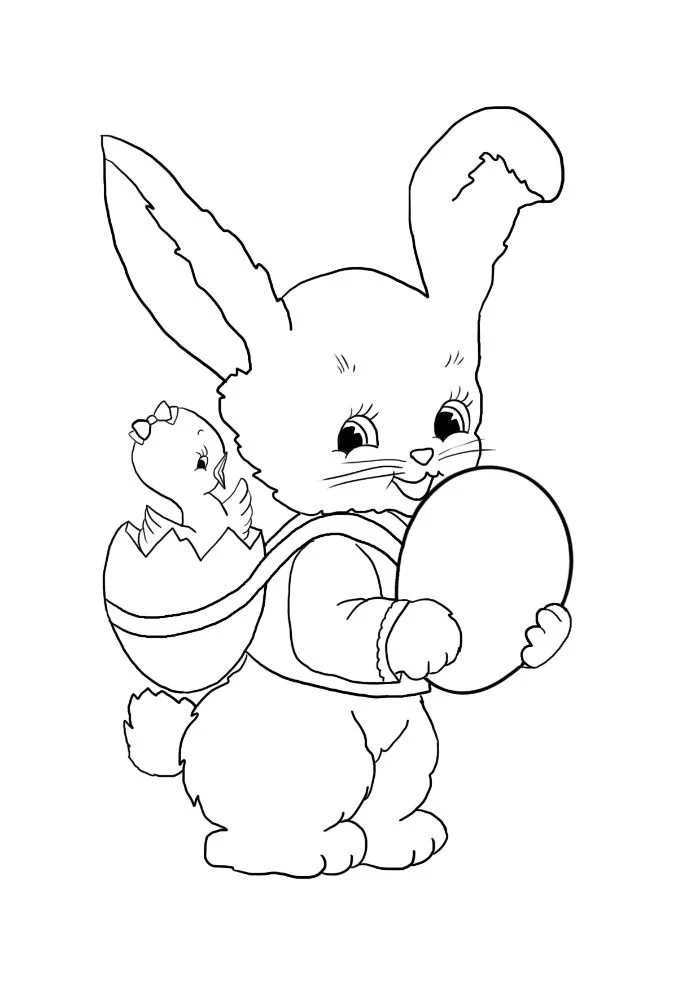
The coloring session is over, now what?
Turn clean-up into a game. Make it a ‘color hunt’ where they have to find all the blues first, then the reds, and so on. Or, challenge them to put the crayons back into the box in rainbow order. This reinforces color recognition and makes tidying up part of the fun, not a chore.
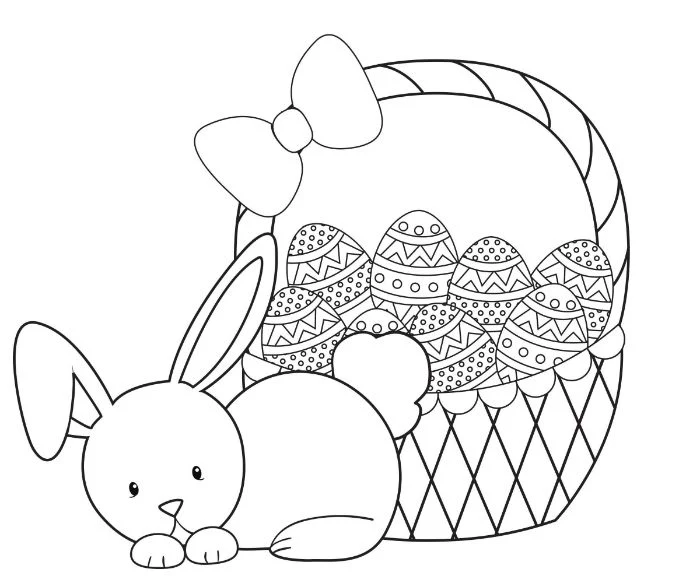
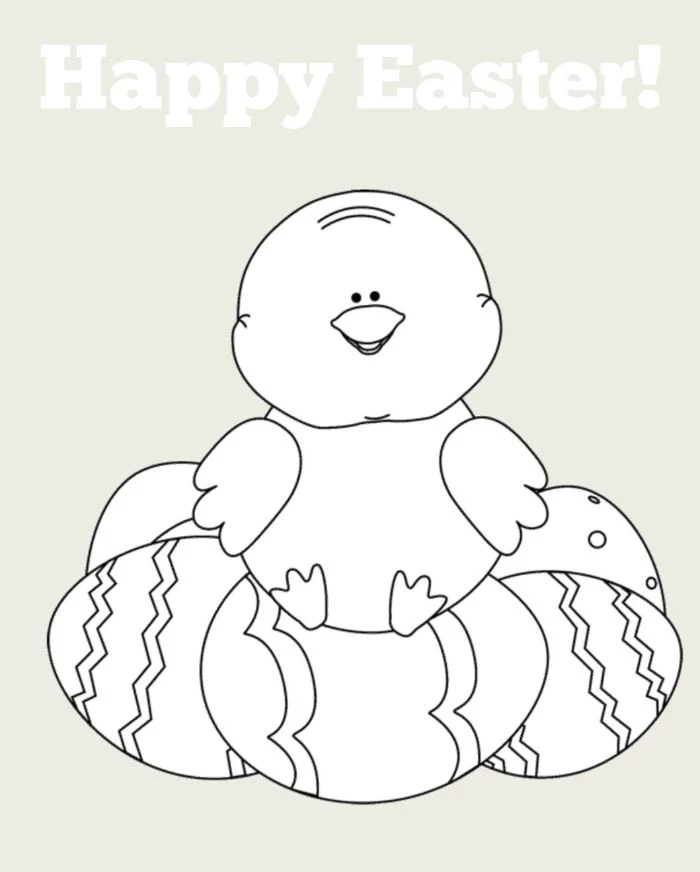
For the youngest artists, traditional crayons can be frustrating. Consider egg-shaped or rock-shaped crayons, like Crayola’s ‘My First Palm Grasp Crayons.’ Their ergonomic design fits perfectly into a toddler’s palm, making it easy to make marks without needing a refined pincer grasp. It’s all about meeting them where they are developmentally.
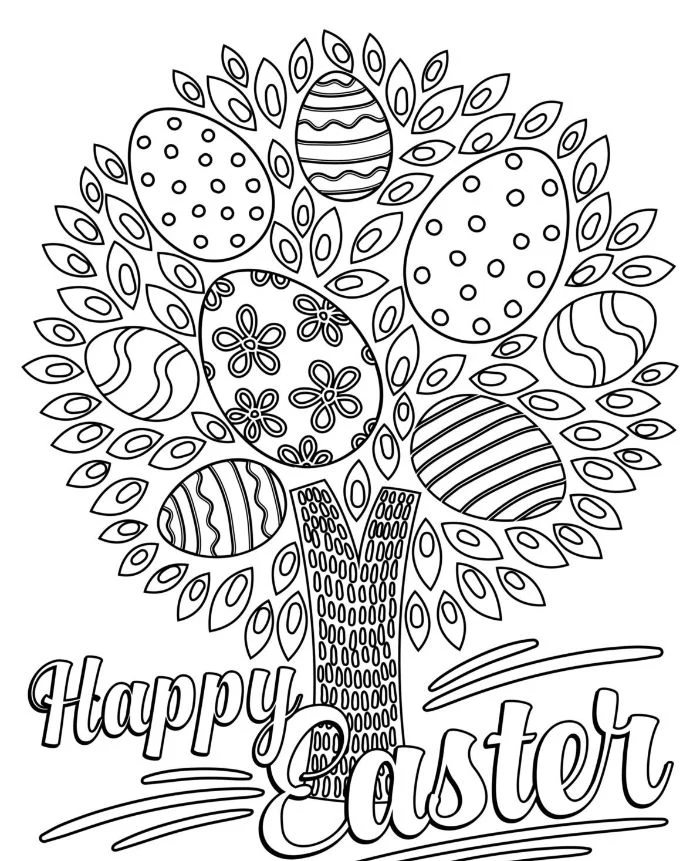
Set the tone with a sensory backdrop. Play a playlist of gentle classical music or put on an Easter-themed audiobook, like Beatrix Potter’s
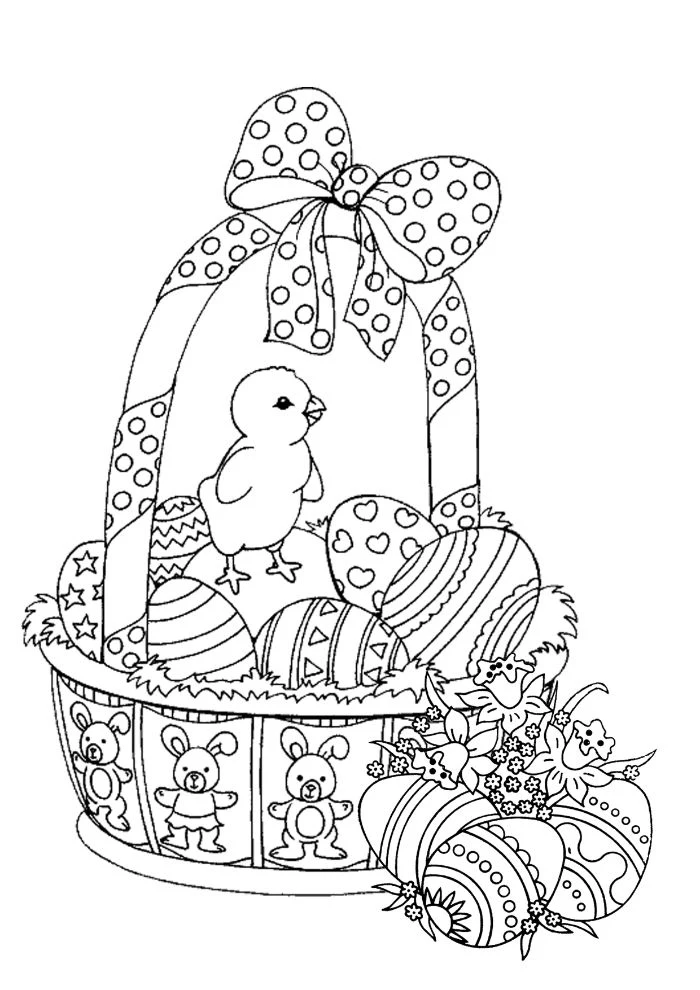
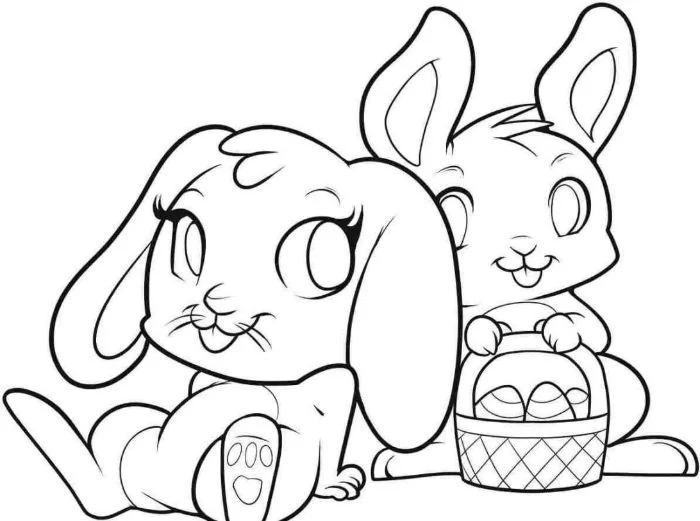
In the 16th century, Germans are believed to have started the tradition of the ‘Osterhase’ or Easter Hare, a character who would judge whether children were good or bad and bring colored eggs to the well-behaved.
Sharing small, fun facts like this can enrich the coloring session, connecting a simple drawing of a bunny to a long and fascinating history.
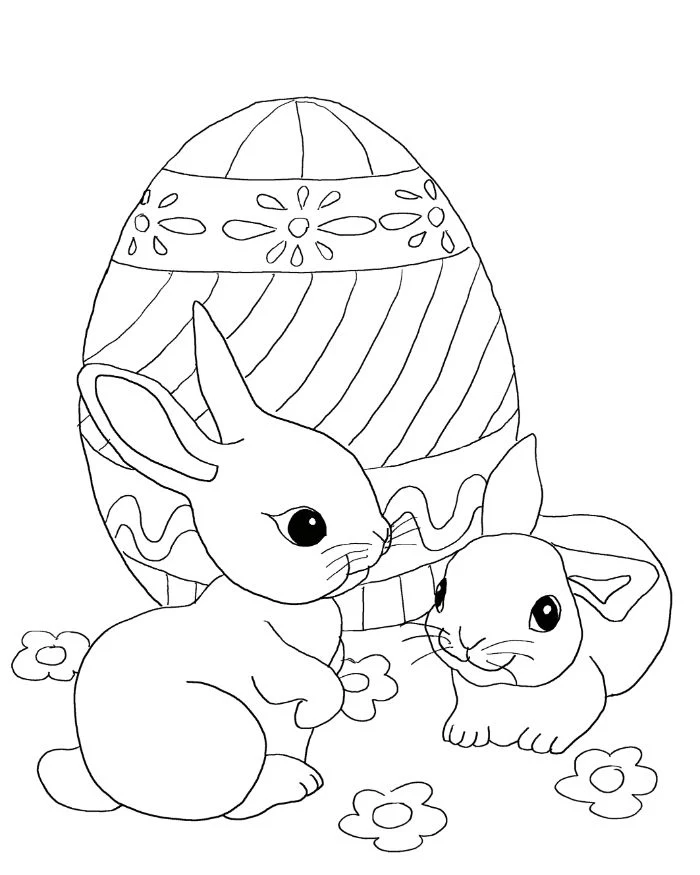
Think beyond coloring ‘in’: Use crayons for rubbings! Place a leaf, a coin, or a piece of textured fabric under the paper. Peel the paper from a crayon, turn it on its side, and rub it over the area to reveal the texture. It’s a magical reveal that teaches about surfaces and patterns.
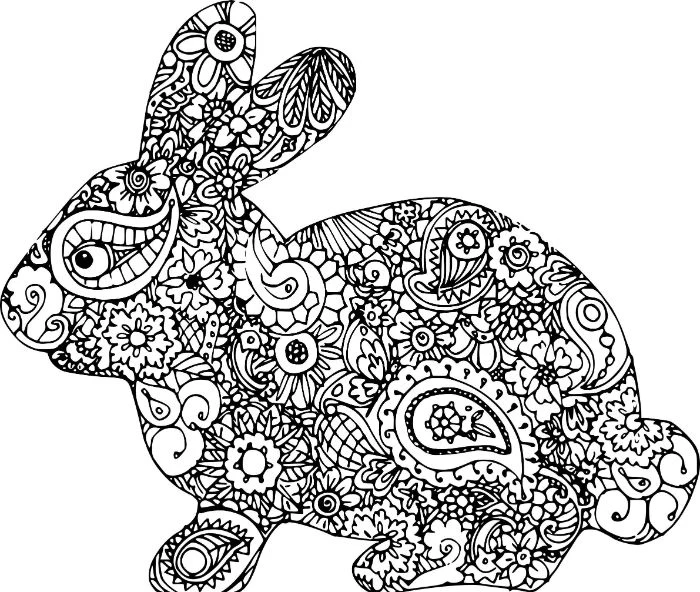
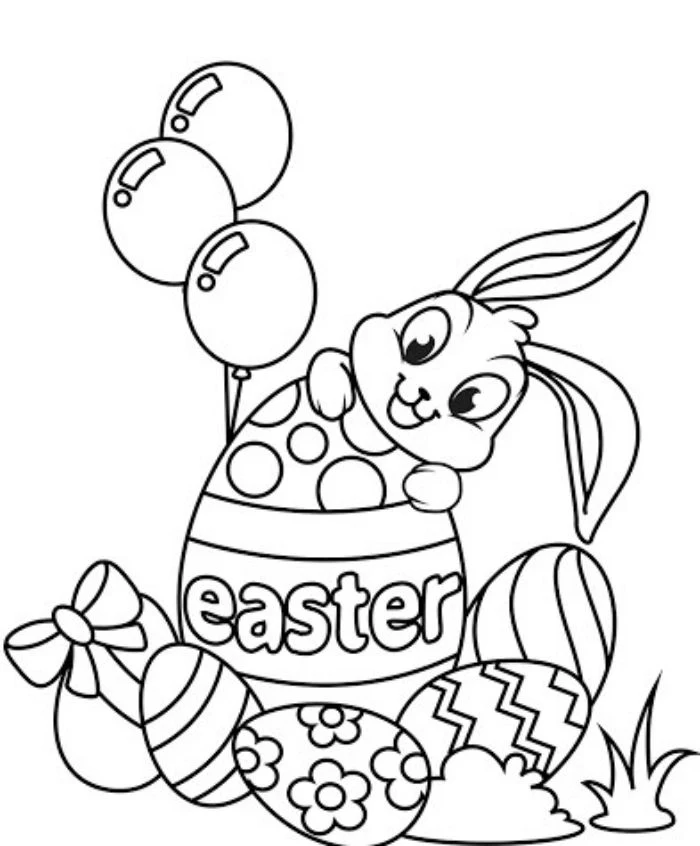
Are there eco-friendly options?
Yes! Look for crayons made from natural, sustainable materials. Brands like ‘HoneySticks’ use 100% natural beeswax, offering a non-toxic and environmentally friendly alternative. They also have a lovely honey scent, adding another sensory layer to the creative experience.
Add a third dimension to their flat artwork. Once the coloring is done, enhance it with simple craft supplies. Glue on a fluffy cotton ball for the bunny’s tail, add two googly eyes, or use a bit of glitter glue to make the Easter eggs shimmer. It adds a tactile element and extends the creative play.

